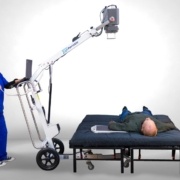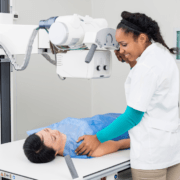X-ray panels are essential components in modern medical and veterinary imaging systems, enabling accurate diagnoses and effective treatment planning. However, with a wide range of options available on the market, selecting the best X-ray panel can be a daunting task. In this comprehensive guide, we’ll explore key factors to consider when choosing an X-ray panel, as well as recommendations to help you make informed decisions.
Before diving into specific features and considerations, it’s important to understand the technology behind X-ray panels. X-ray panels, also known as digital detectors, capture X-ray photons and convert them into electrical signals, which are then processed to create diagnostic images. Two common types of X-ray panel technologies include amorphous silicon (a-Si) and amorphous selenium (a-Se), each offering unique advantages and applications.
Crucial Factors in Panel Selection
Resolution
High resolution is crucial for capturing fine details in X-ray images, particularly in medical applications where precise anatomical structures need to be visualized. Look for X-ray panels with high spatial resolution to ensure clear and accurate imaging.
Sensitivity
Sensitivity refers to the panel’s ability to detect X-ray photons and convert them into electrical signals. Panels with higher sensitivity require lower radiation doses to produce diagnostic-quality images, reducing patient exposure and enhancing safety.
Speed
The speed of image acquisition is another critical factor, especially in busy clinical environments where efficiency is paramount. Consider X-ray panels with fast readout speeds to minimize waiting times and streamline workflow processes.
Durability
X-ray panels are significant investments, so durability is essential to ensure long-term reliability and performance. Look for panels with robust construction and warranties to protect against damage and defects.
Identifying Your Ideal Technology
In the market, there are several types of X-ray panels available, each with its own unique features and advantages. Let’s compare some of the most common types:
Amorphous Silicon (a-Si) Panels
Widely utilized in both medical and veterinary imaging, this type of X-ray panel boasts high resolution, making it ideal for detailed imaging tasks. Additionally, it offers good sensitivity, enabling lower radiation doses during procedures, which prioritizes patient safety without sacrificing image quality. Typically falling within the mid-range in terms of cost, these panels strike a balance between affordability and performance, making them a popular choice for healthcare facilities.
Amorphous Selenium (a-Se) Panels
Preferable for specialized applications where image quality is of utmost importance, this type of X-ray panel offers a resolution comparable to a-Si panels, but potentially surpasses them in image quality due to its higher sensitivity. However, it typically comes at a higher cost compared to a-Si panels, reflecting its advanced features and performance capabilities.
Charge-Coupled Device (CCD) Panels
Frequently employed in fluoroscopy and dynamic imaging applications, this type of X-ray panel offers good resolution paired with fast readout speeds, making it well-suited for dynamic imaging tasks. While it provides moderate sensitivity, it may have certain limitations compared to a-Si and a-Se panels. Additionally, the cost of this panel can vary but is often higher compared to a-Si panels.
Complementary Metal-Oxide-Semiconductor (CMOS) Panels
Commonly found in applications where swift image acquisition is paramount, this type of X-ray panel boasts high resolution coupled with low noise levels and a broad dynamic range. With its good sensitivity, it is well-suited for high-speed imaging tasks, ensuring clear and precise results. However, the cost of this panel is typically higher compared to a-Si panels.
Photostimulable Phosphor (PSP) Plates
Often employed in computed radiography (CR) systems, this type of X-ray panel offers moderate resolution, making it suitable for general imaging applications. While it provides moderate sensitivity comparable to film-based imaging, it may have initial higher costs for the reader equipment. However, it can be cost-effective in the long run due to its reusability, offering a balance between performance and affordability for healthcare facilities.
Recommendations for Dealers
Staying informed about the latest advancements and innovations in X-ray panel technology is crucial for dealers to provide valuable guidance to their customers and stand out from competitors. Offering comprehensive training programs to end-users ensures they can optimize the performance of their X-ray panels and maximize their investment. Also, offering a dedicated support team further enhances customer satisfaction by promptly addressing inquiries, troubleshooting issues, and providing ongoing technical assistance. By prioritizing these initiatives, dealers can build strong relationships with customers and ensure they receive the highest level of support throughout their X-ray panel ownership experience.
Recommendations for End-Users
When selecting an X-ray panel for your practice, it’s essential to start by clearly defining your imaging needs and workflow requirements. This process helps narrow down the options and ensures you choose the most suitable panel for your specific needs. Additionally, it’s crucial to consider future expansion and technological advancements, anticipating potential growth and ensuring compatibility with additional equipment and upgrades down the line. Finally, prioritize quality over price, as superior performance and reliability ultimately lead to better patient care and outcomes. By following these guidelines, you can make a well-informed decision and invest in an X-ray panel that meets both your current and future needs while delivering optimal results for your practice.
To take away
Selecting the optimal X-ray panel demands meticulous attention to key factors including resolution, sensitivity, speed, and durability. The decision hinges on variables such as the intended application, desired image quality, budget constraints, and specific user needs. Each panel type boasts distinct advantages and limitations, underscoring the importance of thorough consideration before finalizing a choice. By carefully evaluating these factors, healthcare providers can make informed decisions that align with their imaging goals and maximize the utility of their X-ray systems.






